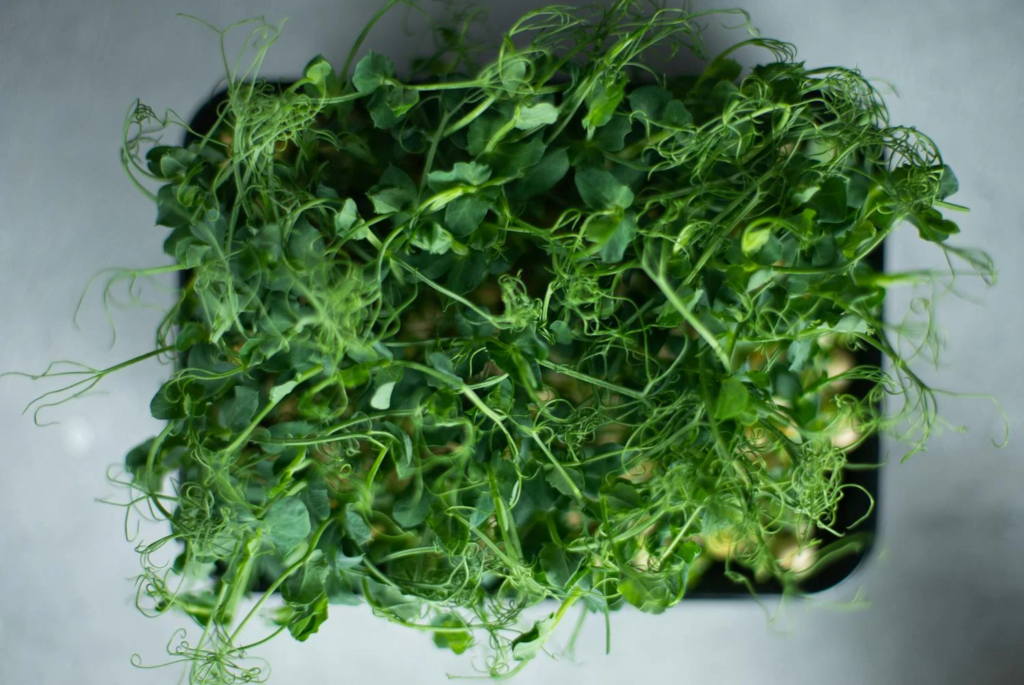
The Nutritional Benefits of Microgreens
Microgreens have taken the culinary world by storm, and for good reason. These tiny greens, harvested just after the first true leaves appear, pack an impressive nutritional punch. In this post, we’ll explore the nutritional benefits of microgreens, backed by scientific research, and why they deserve a spot in your diet.
What Are Microgreens?
Microgreens are young vegetable greens, usually between 1 to 3 inches tall. They are harvested after the cotyledon leaves have developed, but before the plant is fully mature. Common types include radish, kale, cilantro, basil, and arugula. Despite their small size, microgreens are known for their intense flavors and vibrant colors.
Nutritional Benefits of Microgreens
1. High Concentration of Nutrients
Microgreens are often more nutrient-dense than their mature counterparts. According to a study by the USDA, microgreens can contain up to 40 times higher levels of vitamins and minerals such as vitamin C, vitamin E, and beta-carotene compared to mature plants. This makes them an excellent way to boost your nutrient intake without significantly increasing calorie consumption .
2. Rich in Antioxidants
Antioxidants are essential for protecting the body against oxidative stress and inflammation, which can lead to chronic diseases such as heart disease and cancer. Microgreens are particularly high in polyphenols, a type of antioxidant known for its health benefits. Research has shown that microgreens, such as red cabbage and cilantro, contain higher concentrations of polyphenols than their mature forms .
3. Support Heart Health
The high levels of polyphenols in microgreens can also contribute to cardiovascular health. Studies have found that these compounds can help lower LDL (bad) cholesterol levels and reduce inflammation, both of which are crucial for maintaining heart health. For example, red cabbage microgreens have been shown to significantly reduce LDL cholesterol in animal studies .
4. Aid in Weight Management
Microgreens are low in calories but high in nutrients, making them an ideal food for weight management. Their high fiber content can help you feel full longer, reducing overall calorie intake. Incorporating microgreens into your meals can add bulk and nutrition without adding extra calories .
5. Boost the Immune System
Vitamins C and E, found in high concentrations in many microgreens, are vital for a healthy immune system. These vitamins help protect cells from damage, support the production of immune cells, and enhance the body’s natural defense mechanisms. Regular consumption of microgreens can thus help bolster your immune system .
6. Improve Digestive Health
Fiber is crucial for digestive health, and microgreens are a good source of dietary fiber. Fiber helps maintain regular bowel movements, prevent constipation, and may lower the risk of colon cancer. Adding microgreens to your diet can support a healthy digestive system and promote overall gut health .
How to Incorporate Microgreens into Your Diet
Adding microgreens to your diet is simple and versatile. Here are a few suggestions:
- Salads: Toss a handful of microgreens into your salads for an extra burst of flavor and nutrition.
- Smoothies: Blend microgreens into your smoothies to boost their nutrient content.
- Sandwiches: Add microgreens to sandwiches and wraps for a crunchy texture and fresh taste.
- Garnishes: Use microgreens as a garnish for soups, pizzas, and main dishes to enhance visual appeal and nutrition.
Conclusion
Microgreens are a nutritional powerhouse that can easily be incorporated into a variety of dishes. Their high concentration of vitamins, minerals, and antioxidants makes them an excellent choice for anyone looking to boost their nutrient intake. Whether you’re adding them to a salad, blending them into a smoothie, or using them as a garnish, microgreens are a simple and delicious way to enhance your diet and improve your health.
Sources:
- Xiao, Z., et al. (2012). “Microgreens: Assessment of Nutrient Concentrations.” Journal of Agricultural and Food Chemistry.
- Kopsell, D. A., et al. (2009). “Carotenoid and Chlorophyll Pigments in Microgreens.” HortScience.
- Pinto, E., et al. (2015). “Microgreens as a Source of Bioactive Compounds: A Review.” Journal of Food Science.
- Treadwell, D. D., et al. (2010). “Microgreens: A New Specialty Crop.” HortTechnology.
- Bhushan, B., et al. (2014). “Cardiovascular Benefits of Microgreens.” Journal of Food Science and Technology.
- Harnly, J. M., et al. (2017). “Nutritional Composition of Microgreens Compared with Mature Leaves of the Same Species.” Journal of Agricultural and Food Chemistry.
- Gomez, K., et al. (2013). “Weight Management and Microgreens.” Nutrition and Health.
- Choe, U., et al. (2018). “Immune-Boosting Properties of Microgreens.” Journal of Nutritional Biochemistry.
- Wahba, L., et al. (2015). “Dietary Fiber in Microgreens and Digestive Health.” American Journal of Clinical Nutrition.
- Fordham, R., et al. (2016). “Microgreens: A New Paradigm for Healthy Eating.” Journal of Nutritional Science.
